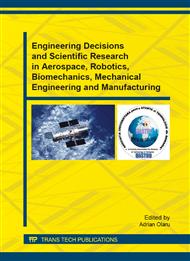[1]
Gregory Goddu, Bo Li, Mo-Yuen Chow, James C. Hung, Motor bearing fault diagnosis by a fundamental frequency amplitude based fuzzy decision system, Industrial Electronics Society, 1998. IECON '98. Proceedings of the 24th Annual Conference of the IEEE, 31 Aug-4 Sep 1998, 1961 - 1965 vol. 4.
DOI: 10.1109/iecon.1998.724018
Google Scholar
[2]
Robert B. Randall, Jerome Antoni, Rolling element bearing diagnostics—A tutorial, Mechanical Systems and Signal Processing 25 (2011) 485–520.
DOI: 10.1016/j.ymssp.2010.07.017
Google Scholar
[3]
J. Vass, R. Smid, R.B. Randall, P. Sovka, C. Cristalli, B. Torcianti, Avoidance of speckle noise in laser vibrometry by the use of kurtosis ratio: Application to mechanical fault diagnostics, Mechanical Systems and Signal Processing 22 (2008).
DOI: 10.1016/j.ymssp.2007.08.008
Google Scholar
[4]
N. Sawalhi, R. B. Randall, The application of spectral kurtosis to bearing diagnostics, Proceeding of ACOUSTICS 2004, 3-5 November 2004, Gold Coast, Australia.
Google Scholar
[5]
B. Badri, M. Thomas and S. Sassi, A shock filter for bearing slipping detection and multiple damage diagnosis, International Journal of Mechanics , Issue 4, Volume 5 (2011), 318-326.
Google Scholar
[6]
Bearing Data Center (B.D.C. ), Website of Case Western Reserve University, Cleveland, Ohio, USA (2006) <http: /csegroups. case. edu/bearingdatacenter/pages/welcome-case-western-reserve-university-bearing-data-center-website>.
DOI: 10.15586/codon.noncutaneousmelanoma.2018
Google Scholar
[7]
Scilab Fuzzy Logic Toolbox, http: /www. geocities. ws/jaime_urzua/ sciFLT /sciflt. html.
Google Scholar
[8]
Scilab environment, https: /www. scilab. org.
Google Scholar


